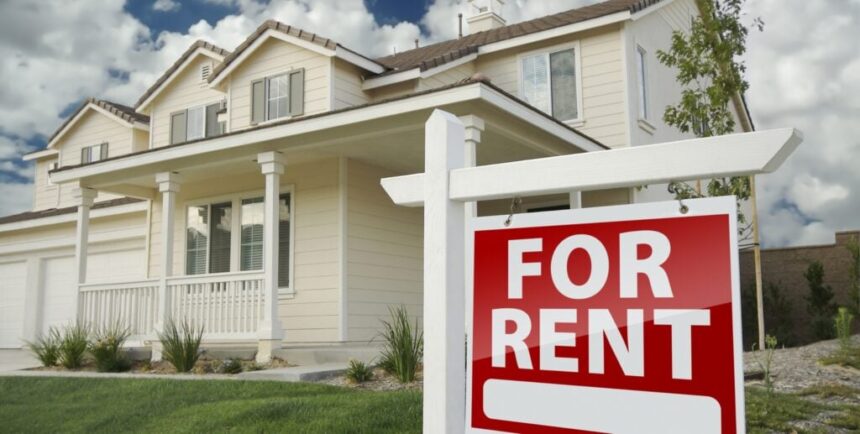The record-breaking rent growth of the last several years is showing signs of fading. Earlier this month, Redfin reported that rent growth slid 0.6% on a year-over-year basis for the first time since the pandemic. This is, of course, a modest decline in rents, but it begs the question: will there be a bigger correction or even a crash in rents? Or is it possible that rent growth will pick back up in the coming years? Let’s dig in.
Where Rent Growth Stands
When we talk about rent growth in the U.S., the normal situation is for rent growth to be around or slightly higher than the pace of inflation. During the 2010s, most markets had an average annual rent growth of 3-5%. But during the pandemic, as we all know, this changed, and rent growth peaked at around 17.5% on a national basis, with some individual markets seeing annual rent growth top 30%.

The explosive rent growth of 2021-2022 was fueled primarily by low supply, dramatic shifts in migration patterns, strong demographic trends, and household formation, along with economy-wide inflation.
But as the economic outlook remains confusing and cloudy, rent trends have started to shift. The 0.6% decline in asking rents in May is obviously a very small decline and is just one data source. But it’s the trend that investors should care about, which is very telling. The Wall Street Journal recently compiled the year-over-year change in asking rents from six sources, and although the exact numbers vary, the trends are consistent.

It’s important to note that the data referenced above is “asking rent,” which tracks what property managers publicly list units for. It does not reflect the final price leases are actually signed for, nor does it reflect lease renewal prices.
That said, there is recent data for lease renewals suggesting that rent increases are slowing in that sector as well. According to RealPage, the average lease renewal in May 2023 was 6.5% higher than the year prior. This is still extremely high by historical standards but has come down from an average 11% renewal increase the year prior.
Why is Rent Growth Falling?
First, supply is growing. The last several years have seen a multifamily construction boom, and a lot of new inventory is still hitting the market. Additionally, more and more single-family homeowners are choosing to rent out their homes rather than sell, which further adds to rental supply. When supply increases, tenants have more options, and property managers must compete on price. This can push down rents.
Secondly, rents are easing because of the general economic climate. Americans (and economists) are generally bracing for an upcoming recession while inflation continues to erode spending power, both of which change spending patterns. People are less likely to move, form a new household, or spring after a more expensive home during these uncertain times.
Lastly, it’s natural that at some point, rent growth will return to somewhere near the historical average. As that reversion to the average happens, a period of negative growth to correct for recent booms is pretty typical.
Of course, the above trends are on a national basis, and there are pretty significant regional differences in rent trends. If you’ve been following prices in the housing market over the last year, you’ll likely notice a familiar trend here:

The markets that boomed the most during the pandemic, the West and the South, are seeing the biggest corrections. Meanwhile, the Midwest has been very consistent for almost a year. The Northeast has come down from pandemic highs but is still experiencing higher-than-normal rent appreciation.
What Does This Mean?
For investors, this shift in market conditions is important for several reasons.
First, it’s important to note that for investors with existing properties, none of this data suggests that current rents will fall. Remember, the data we’re looking at here is for new leases, which tend to be more volatile than existing leases. Personally, I think asking rents will come down a bit more before they bottom out, but I expect current rents to stay fairly similar. Rent for existing tenants tends to be very sticky, even during economic downturns.
Second, if you’re looking to make a new investment, I wouldn’t count on any rent growth through 2024. This is at least what I am doing. I think we’ve had what is known as a “pull-forward” over the last couple of years. Meaning rents normally grow 3-5% per year, and we had a few years of double-digit rent growth, essentially pulling several years of future rent growth into 2021 and 2022. In other words, there could be a rent hangover.
Is there a chance rent will rebound before 2025? Yes, absolutely. A pretty decent chance, in fact. But there’s just so much uncertainty right now to make any meaningful predictions. Given the uncertainty, I think underwriting for no rent growth for the next two years is a way to hedge risk at the moment. If a deal pencils out with no rent growth for the next two years, grab it! This way, if I’m wrong and rent does grow, it’s just a bonus for you on top of an already good deal.
In recent years I know some investors have been buying properties that don’t or barely cash flow because they were counting on rent growth to help them reach a solid cash-on-cash return over time. While that’s still possible, I think it’s a risky proposition at this point. I wouldn’t do that personally. If you’re investing for cash flow, buy deals that cash flow today. Don’t count on something changing in the future.
Analyze Deals Like a Pro
Deal analysis is one of the first and most critical steps of real estate investing. Maximize your confidence in each deal with this first-ever ultimate guide to deal analysis. Real Estate by the Numbers makes real estate math easy, and makes real estate success inevitable.
Note By BiggerPockets: These are opinions written by the author and do not necessarily represent the opinions of BiggerPockets.









